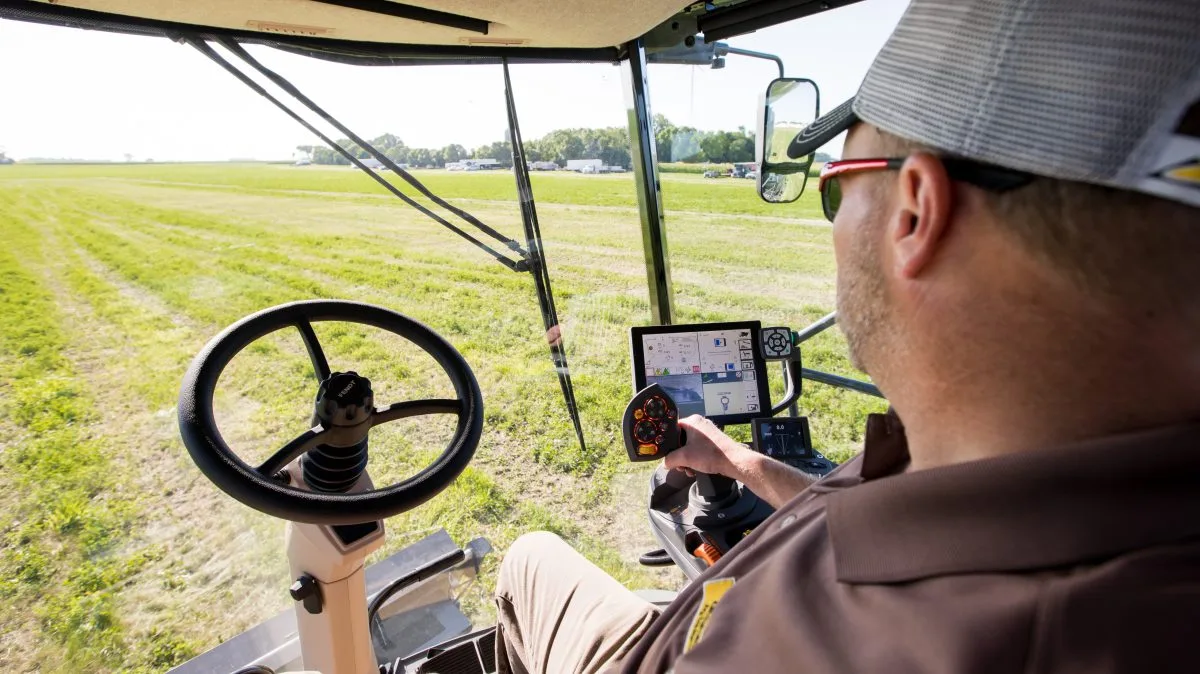It's hard to believe that we are days away from the end of 2021. Before you know it, we will be...
Why is Precision Agriculture Important?

When agriculture began at the end of the Stone Age, the world had approximately 5 million people to feed, and few, if any, farmers were feeding people beyond their extended family. Farmers today use technology to plant and harvest mile-long fields with equipment guided by satellites for sub-inch accuracy, allowing them to feed nearly 8 billion people across the world with fewer resources than ever before.
Beginnings
The term “precision agriculture” means managing, tracking or enhancing crop or livestock production inputs, including seed, feed, fertilizer, chemicals, water and time, at a heightened level of accuracy to improve efficiencies and commodity quality and yield, while positively impacting environmental stewardship.
To understand advancements in precision agriculture technology, we have to start at the beginning when precision agriculture wasn’t yet guided by GPS. Dr. Pierre Robert, sometimes referred to as “the father of precision agriculture,” conducted some of the earliest research on soil variability. In 1983, Dr. Robert was the first to research variable rate fertilizer spreading, which acknowledges that different areas of a field have different crop yields and thus have different nutrient requirements to obtain optimal yields. This understanding eventually led to the variable rate field management systems that farmers use today. According to a publication by USDA’s Economic Research Service (ERS), variable rate technology is used to plant between 5-25% of total U.S. planted acreage for winter wheat, cotton, sorghum and rice.
Through much of the 1990s, data was gearing up to become the new crop of the 21st century. Now farmers just needed a method to gather information more efficiently. The first yield monitor, created in 1992, did just that. Yield monitors allowed farmers to record observable changes in crop yields throughout an entire field. This data could be paired with grid sampling, taking soil samples from grid points mapped out on a field, to create a map of input adjustments needed to improve yields.
‘Precision agriculture allows farmers to deliver exactly what a plant needs, exactly when and where it needs it and in the exact amount.’
Advancement
The remaining piece of the puzzle was how to make applying variable rate technology more efficient. GPS auto-guidance systems revolutionized the way farmers operate machinery. The first GPS auto-guidance system was used on a salt harvester in 1996. By the early 2000s, precision farming began to pick up speed. According to the previously referenced ERS report, today the majority of corn, cotton, rice, sorghum, soybeans and winter wheat acres are planted using auto-guidance. These guidance systems are the foundation of precision agriculture across all brands of equipment and electronics that are used to produce food, fiber and renewable fuel for the world.
GPS systems are environmentally friendly and allow for more efficient use of inputs. These technologies deliver exactly what a plant needs, exactly where it’s needed, reducing waste and runoff that would be the result of excessive use. Thanks to auto-guidance systems that allowed a GPS signal to steer tractors with pinpoint accuracy, this can all be done while simultaneously gathering and recording field data.
Today
Most precision agriculture systems operate today using real-time kinematic (RTK) positioning signals. These satellite signals use measurements from the signal’s carrier wave in addition to information sent from a base station to correct errors in positioning for sub-inch or even sub-centimeter accuracy. These systems are also capable of using a wide-area augmentation system signal with 6- to 8-inch accuracy as a backup if RTK is having problems.
RTK can be used for field operations such as tillage, planting, harvesting, spraying and a wide range of other field activities. This technology is used to collect data relating to soil temperature, soil moisture, seeding depth, seeds per acre, yield and more while a farmer carries out normal operations. This data is accumulated and can be used to provide production performance over time. Topography data can even be gathered and used to design tile drainage systems that help more efficiently manage water.
Precision agriculture allows farmers to deliver exactly what a plant needs, exactly when and where it needs it and in the exact amount. This increases efficiency for chemical and fertilizer use and helps avoid excess application, making it more environmentally friendly. Chemicals aren’t wasted and fertilizer is utilized by the plant rather than empty space where roots are not able to reach.
EDITOR’S TAKE:
It is almost impossible to explain to anyone not directly involved with agriculture, just how far precision agriculture has advanced in the past decade or two, yet alone in my lifetime. The ability is astounding. Farmers/ranchers today are so much more efficient and productive because of precision agricultural developments. It saves time, money and is better for the plants and the environment. Eliminating wasteful spraying or fertilizer applications are only two-small examples of why this technology is so important. In addition, the data generated by such precision allows farmers/ranchers to adjust their plans/strategies and stay ahead of the game. Adjust your strategy as well. Every time someone comes into your dealership, make sure you identify those who are farmers/ranchers. Once you do that, let them know about your CAD certification and, most importantly, let them know about AgPack®. AgPack® is specifically designed to help you conquest the deal by offering thousands in exclusive rebates and discounts only available at a CAD member dealership!






.jpg?height=200&name=farmer-hands-exchanging-money-green-crops%20(1).jpg)
